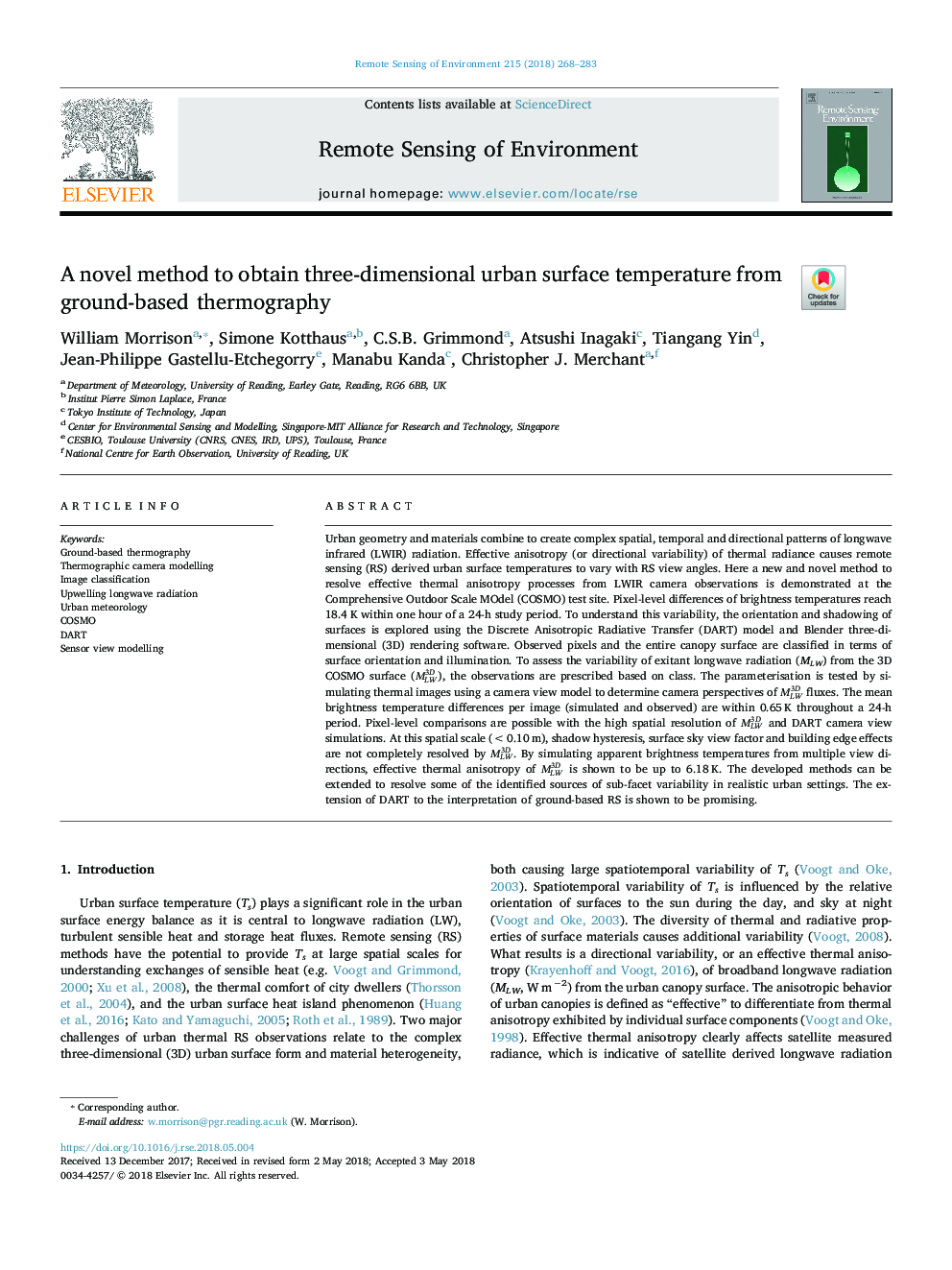| کد مقاله | کد نشریه | سال انتشار | مقاله انگلیسی | نسخه تمام متن |
|---|---|---|---|---|
| 8866476 | 1621185 | 2018 | 16 صفحه PDF | دانلود رایگان |
عنوان انگلیسی مقاله ISI
A novel method to obtain three-dimensional urban surface temperature from ground-based thermography
ترجمه فارسی عنوان
یک روش جدید برای به دست آوردن درجه حرارت سطح سه بعدی شهری از ترموگرافی مبتنی بر زمین
دانلود مقاله + سفارش ترجمه
دانلود مقاله ISI انگلیسی
رایگان برای ایرانیان
کلمات کلیدی
موضوعات مرتبط
مهندسی و علوم پایه
علوم زمین و سیارات
کامپیوتر در علوم زمین
چکیده انگلیسی
Urban geometry and materials combine to create complex spatial, temporal and directional patterns of longwave infrared (LWIR) radiation. Effective anisotropy (or directional variability) of thermal radiance causes remote sensing (RS) derived urban surface temperatures to vary with RS view angles. Here a new and novel method to resolve effective thermal anisotropy processes from LWIR camera observations is demonstrated at the Comprehensive Outdoor Scale MOdel (COSMO) test site. Pixel-level differences of brightness temperatures reach 18.4â¯K within one hour of a 24-h study period. To understand this variability, the orientation and shadowing of surfaces is explored using the Discrete Anisotropic Radiative Transfer (DART) model and Blender three-dimensional (3D) rendering software. Observed pixels and the entire canopy surface are classified in terms of surface orientation and illumination. To assess the variability of exitant longwave radiation (MLW) from the 3D COSMO surface (MLW3D), the observations are prescribed based on class. The parameterisation is tested by simulating thermal images using a camera view model to determine camera perspectives of MLW3D fluxes. The mean brightness temperature differences per image (simulated and observed) are within 0.65â¯K throughout a 24-h period. Pixel-level comparisons are possible with the high spatial resolution of MLW3D and DART camera view simulations. At this spatial scale (<0.10â¯m), shadow hysteresis, surface sky view factor and building edge effects are not completely resolved by MLW3D. By simulating apparent brightness temperatures from multiple view directions, effective thermal anisotropy of MLW3D is shown to be up to 6.18â¯K. The developed methods can be extended to resolve some of the identified sources of sub-facet variability in realistic urban settings. The extension of DART to the interpretation of ground-based RS is shown to be promising.
ناشر
Database: Elsevier - ScienceDirect (ساینس دایرکت)
Journal: Remote Sensing of Environment - Volume 215, 15 September 2018, Pages 268-283
Journal: Remote Sensing of Environment - Volume 215, 15 September 2018, Pages 268-283
نویسندگان
William Morrison, Simone Kotthaus, C.S.B. Grimmond, Atsushi Inagaki, Tiangang Yin, Jean-Philippe Gastellu-Etchegorry, Manabu Kanda, Christopher J. Merchant,
